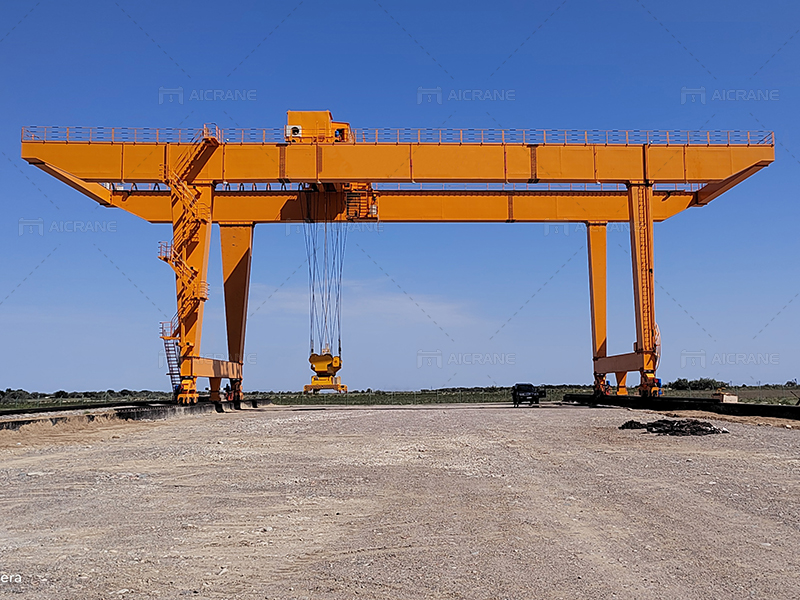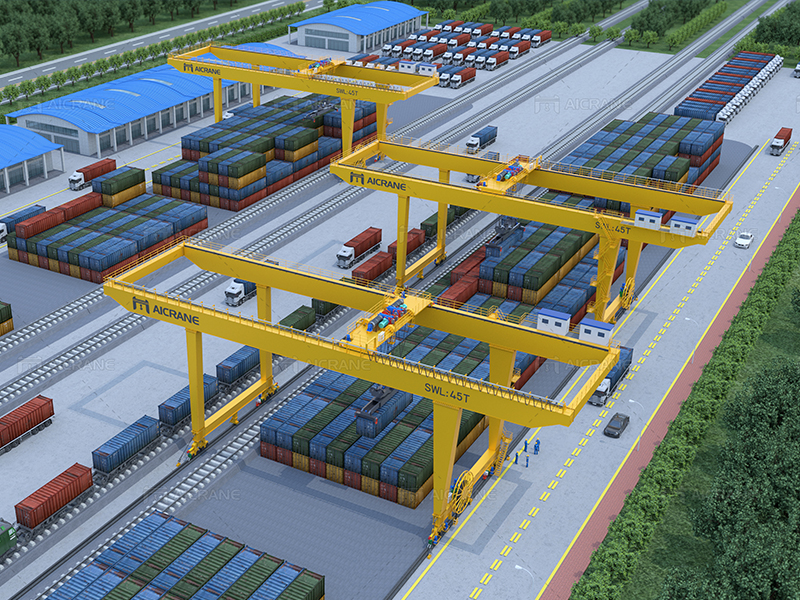In the dynamic world of global trade, ports and terminals play a crucial role in facilitating the movement of goods across borders. The efficiency of these hubs directly impacts the overall supply chain, affecting everything from transportation costs to delivery times. Rail-mounted container gantry cranes (RMG cranes) have emerged as a key player in enhancing the efficiency of ports and terminals. This article explores the significant contributions of RMG cranes to the overall operational excellence of these critical transportation nodes.

Overview of Rail-Mounted Container Gantry Cranes
RMG cranes are heavy-duty, specialized lifting equipment designed for the efficient handling of containers within port facilities. Unlike their traditional counterparts, RMG cranes run on rails, providing a fixed and precise path for container movement. These container gantry cranes are typically used in container yards and stacking areas of ports, where they lift and transfer containers between storage areas, trucks, and ships.
Improved Throughput and Handling Speed
One of the primary contributions of RMG cranes to port efficiency is their ability to significantly enhance throughput and handling speed. By operating on a fixed rail system, RMG cranes can move containers swiftly and precisely between storage stacks and transport vehicles. This reduces the time required for loading and unloading operations, enabling ports to handle a larger volume of containers in a given timeframe.
Optimal Space Utilization
Efficient use of space is crucial for any port or terminal aiming to maximize its operational capacity. RMG cranes contribute to optimal space utilization by utilizing a vertical stacking system. Containers can be stacked higher, making the most of the available space without compromising safety or accessibility. This vertical stacking capability allows ports to accommodate a greater number of containers within the same footprint, ultimately leading to increased efficiency.
Reduced Dwell Time for Containers
Dwell time, the duration containers spend at a port facility, directly impacts the overall efficiency of the supply chain. RMG cranes play a pivotal role in reducing dwell time by streamlining the process of loading and unloading containers from ships. The efficiency gains result from the cranes’ ability to handle multiple containers simultaneously and move them swiftly to their designated storage locations. This reduction in dwell time not only enhances port efficiency but also contributes to a smoother flow of goods throughout the entire transportation network.

Enhanced Safety and Precision
Safety is a paramount concern in port operations, given the massive size and weight of containers. Rail mounted gantry cranes are designed with advanced safety features and automated control systems that enhance precision during container handling. The fixed rail system ensures a predictable and controlled path for the cranes, minimizing the risk of accidents. Additionally, the precision in container placement reduces the chances of damage to goods, leading to overall improvements in safety and operational efficiency.
Integration with Intermodal Transportation
The seamless integration of ports with various modes of transportation is critical for a well-functioning supply chain. RMG cranes contribute to this integration by efficiently transferring containers between ships, trucks, and rail transport. The rail-mounted design allows for direct loading and unloading of containers onto and from rail cars, facilitating the smooth transition of goods between maritime and land-based transportation modes. This integration not only enhances port efficiency but also improves the overall effectiveness of the broader transportation network.
Environmental Benefits
In addition to their operational advantages, RMG cranes offer environmental benefits that align with the growing emphasis on sustainable practices in the shipping industry. The electrification of RMG cranes and their ability to run on electric power contribute to a reduction in carbon emissions compared to traditional diesel-powered cranes. As ports increasingly prioritize environmental sustainability, the adoption of eco-friendly technologies like RMG cranes becomes a key factor in their long-term planning and development.
Conclusion
Rail-mounted container gantry cranes are instrumental in elevating the efficiency of ports and terminals worldwide. Their ability to enhance throughput, optimize space utilization, reduce dwell time, and integrate seamlessly with intermodal transportation makes them indispensable in the modern shipping industry. As the global trade landscape continues to evolve, the role of RMG cranes in facilitating smoother and more efficient port operations will only become more pronounced. Ports and terminals that invest in these advanced lifting solutions are well-positioned to meet the challenges of a rapidly changing logistics environment while contributing to a more sustainable and interconnected global supply chain.